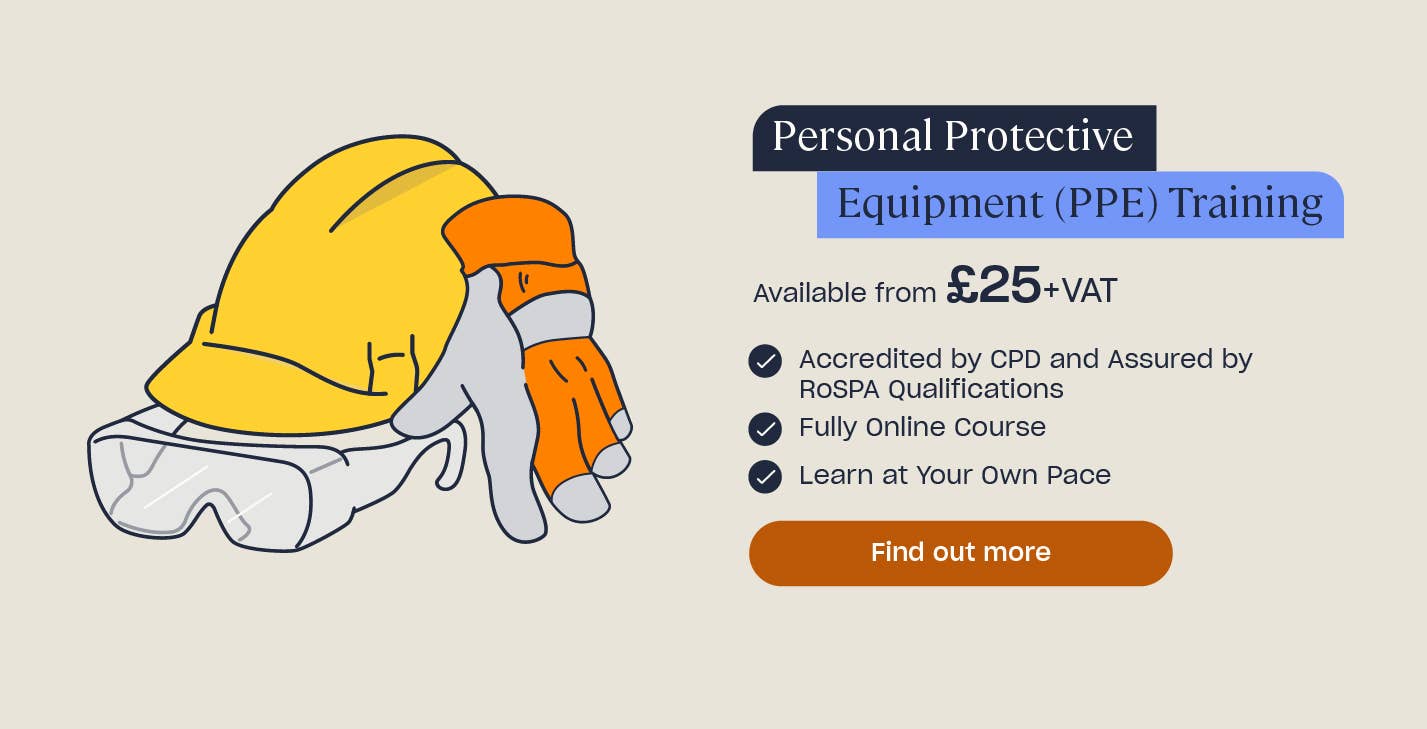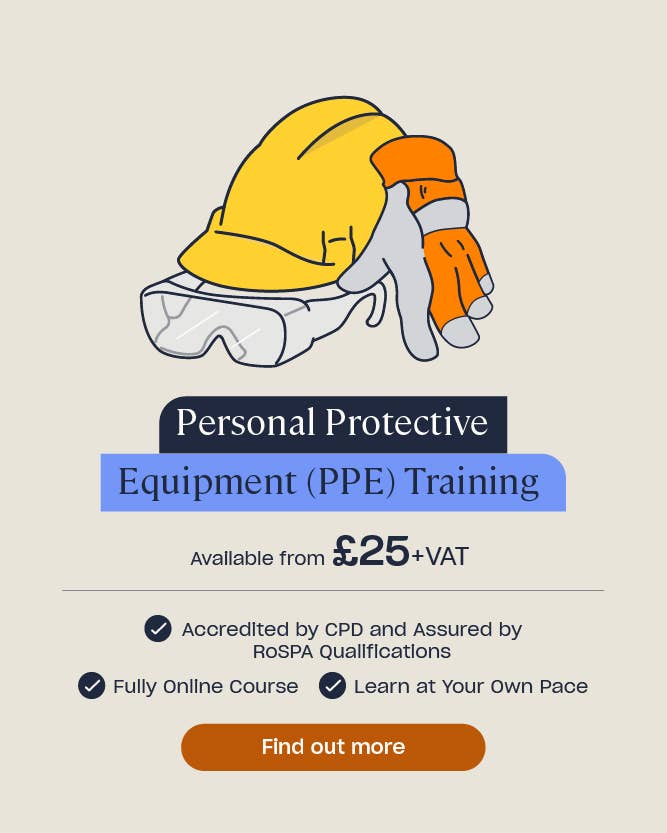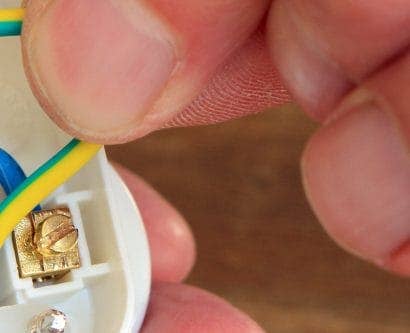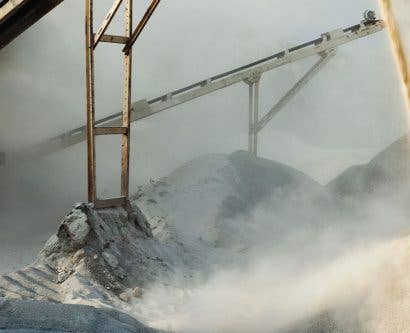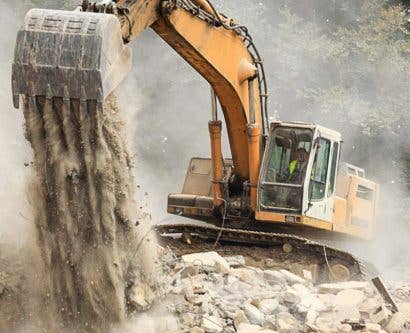Guidance on the PPE at Work Regulations: Responsibilities and Changes
Personal protective equipment (or PPE for short) is an important control measure for many types of work activities. It comes last in the hierarchy of control (which sets out the order in which controls should be considered to mitigate risks), meaning it will be down to each business’s risk assessment to determine whether PPE is necessary for mitigating residual risks after other controls have been considered first.
If PPE is identified as needed, then the employer and senior staff must ensure it is selected, used, and maintained correctly, and must ensure employees who use PPE have the necessary information, instruction, and training on using and maintaining it. Having an understanding of the Personal Protective Equipment at Work Regulations 1992 (also referred to as the PPE Regulations or PPE at Work Regulations) will help them understand what duties they need to fulfil.
This article will provide a general understanding of the responsibilities set out in the PPE at Work Regulations, including those that apply to employers and employees, as well as explain some amendments that occurred to the Regulations in 2022.
This article covers the following topics:
- What are the Personal Protective Equipment (PPE) Regulations?
- What are the 2022 PPE Regulations Changes?
- PPE at Work Regulations: Employers Responsibilities
- PPE at Work Regulations: Employees Responsibilities
Use the above links to jump to certain sections of the article.
What are the Personal Protective Equipment (PPE) Regulations?
The Personal Protective Equipment at Work Regulations 1992 set out when and how PPE should be used to control the risks posed by work hazards. They apply to all work activities and cover a range of important factors for ensuring PPE is selected, used, and maintained safely.
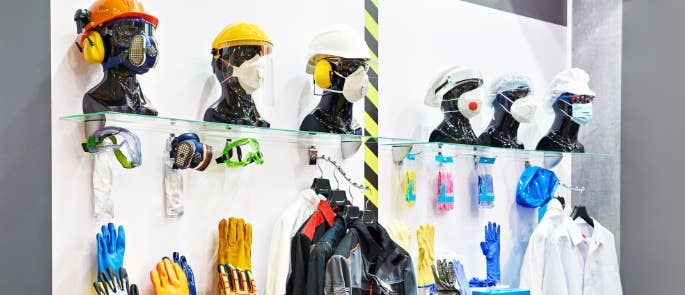
Key topics that the PPE at Work Regulations cover include:
- When PPE should be provided by employers to help control health and safety risks.
- Employers ensuring a risk assessment is carried out to determine whether the personal protective equipment that they intend to provide is suitable.
- How to ensure PPE is compatible when multiple items must be worn.
- Maintaining and replacing PPE.
- Ensuring PPE can be safely stored.
- Ensuring employees are provided with information, instruction, and training so they can use it correctly, as well as understand how to report lost or defective PPE.
It also sets out the definition of PPE in the context of the Regulations, which is as follows:
‘Personal protective equipment’ means all equipment (including clothing affording protection against the weather) which is intended to be worn or held by a person at work and which protects him against one or more risks to his health or safety, and any addition or accessory designed to meet that objective.
The Personal Protective Equipment at Work Regulations 1992, Regulation 2.
The Regulations also explain which types of equipment it does not apply to and where there are exemptions.
For example, it does not apply to uniforms that are not specifically for health and safety (such as branded attire) or to equipment used for competitive sports. Furthermore, an exemption is that the Secretary of State for Defence may, in the interests of national security, produce a certificate in writing to exempt any of the home forces, any visiting force, or any headquarters from certain requirements of the Regulations.
It’s important to be aware that there are other sets of regulations which contain their own requirements for PPE, and place specific duties on employers regarding PPE selection. The PPE at Work Regulations acknowledge this, and state:
Regulations 4 and 6 to 12 [of the PPE Regulations] shall not apply where any of the following Regulations apply and in respect of any risk to a person’s health or safety for which any of them require the provision or use of personal protective equipment:
- The Control of Lead at Work Regulations.
- The Ionising Radiations Regulations.
- The Control of Asbestos at Work Regulations.
- The Control of Substances Hazardous to Health (COSHH) Regulations.
- The Control of Noise at Work Regulations.
- The Construction (Head Protection) Regulation.
The Personal Protective Equipment at Work Regulations 1992, Regulation 3.
Employers must understand the requirements of these Regulations if they have identified PPE as necessary to control any risks that they cover. For example, if hearing protection is needed, the employer needs to be aware of the requirements set out by the Noise at Work Regulations.
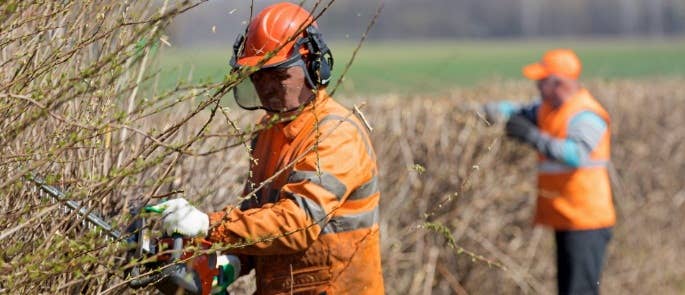
Finally, you should note that the PPE at Work Regulations were amended in 2022, via the Personal Protective Equipment at Work (Amendment) Regulations 2022. The next section explains what amendments have been introduced.
What are the 2022 PPE Regulations Changes?
The PPE at Work Regulations were amended in April 2022 to include casual and other intermittent workers. The change was enforced through The Personal Protective Equipment at Work (Amendment) Regulations 2022.
This amendment is as a result of the High Court ruling that casual workers and others who work intermittently for an employer are also protected by the PPE at Work Regulations.
Employers therefore must provide and supervise the use of PPE for casual and intermittent workers in the same way as they do for employees. For agency workers, the agency must ensure that the PPE at Work Regulations are complied with for the individual worker and that PPE is provided for their use. The employer carrying out the work must ensure that they are managed and supervised in the same way as other employees.
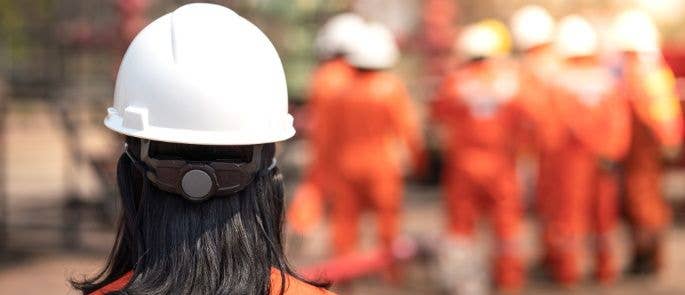
This also applies to self-employed people. If a self-employed person works in any location (whether fixed e.g. a warehouse, or temporary e.g. a construction site or outdoors) that is under the control of another company, the other company may set site rules on PPE following their risk assessment. The self-employed person must comply with these rules. In those cases, the self-employed person has a duty to provide PPE for themselves and those working under their control, e.g. a casual worker.
Further guidance, such as the definitions of limb workers under the Regulations, can be found on the Health and Safety Executive website. The changes described above are the only changes that have been made to the PPE at Work Regulations as a result of the 2022 amendment.
PPE at Work Regulations: Employers’ Responsibilities
Employers have a number of responsibilities under the PPE at Work Regulations. Regulation 4 states:
Every employer shall ensure that suitable personal protective equipment is provided to [their] employees who may be exposed to a risk to their health or safety while at work, except where and to the extent that such risk has been adequately controlled by other means which are equally or more effective.
The Personal Protective Equipment at Work Regulations 1992, Regulation 4.
More specifically, the PPE at Work Regulations place duties on employers and the self-employed to ensure that PPE is:
- Selected in the order of the hierarchy of control. The hierarchy of control must be considered when an employer is looking at requirements for PPE. This is important for them to understand. Other, more effective controls must be considered first, as PPE only provides individual protection is only effective if used correctly, and is subject to subject to supervision and monitoring. There are also other factors that can impact its effectiveness. PPE is designed to control residual risks after other controls have been implemented.
- Assessed before it is used to ensure that it’s suitable for its intended use, that it fits the wearer, and is comfortable when used. It should also come with a suitable conformity marking to demonstrate it’s been made to a recognised standard.
- Provided with instructions, and where necessary, training in its safe use, cleaning, maintenance, and storage. Employers should take reasonable steps (via training, instruction, supervision, and monitoring) to ensure that employees wear PPE correctly and when required.
- Maintained and replaced as required to ensure it continues to provide effective protection. Managers and supervisors should regularly check that employees have adequate PPE, that it is in date, and is in a usable condition.
- Properly stored when not in use in a clean, dry storage area. Arrangements should be in place for removal and safe cleaning of PPE at the end of work periods. PPE must be stored in a clean, dry storage area in a dedicated changing room, and where necessary lockers should be provided for storage.
- Compatible with any other types of PPE that have to be worn at the same time. For example, if safety glasses or goggles are worn together with ear muffs, the arms of the safety glasses push the ear muffs away from the ears and reduce their effectiveness. In this situation, a good solution would be to provide ear plugs for those who have to wear safety glasses at the same time. This ensures they are compatible.
- Provided free of charge to employees. Employers must pay for PPE that they provide – employees are not responsible for covering the cost. This includes the cost of repairs and replacements.
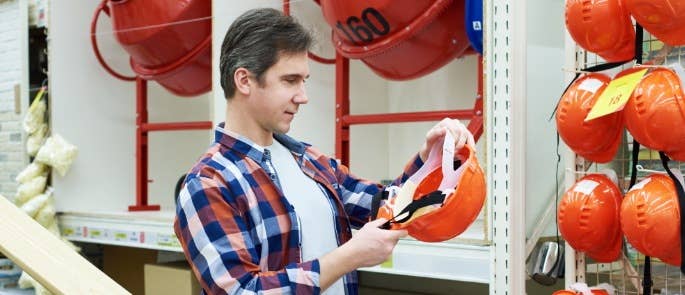
The genuinely self-employed, which means those who offer their services as a business and control their own activities, also have legal duties under the PPE at Work Regulations in certain situations, such as in construction. They must carry out a risk assessment and provide themselves with suitable PPE where necessary.
Need Health and Safety Training?
High Speed Training offer a wide range of online health and safety training courses, from employers to employees and every level in between. For example, we offer Basic Health and Safety Training, Health and Safety Training for Employees, and Health and Safety Training for Managers. You can find all of these at our Health and Safety Training page.
PPE at Work Regulations: Employees’ Responsibilities
Employees at every level also have responsibilities under the PPE at Work Regulations. While the employer has the primary duty for ensuring PPE is provided and used correctly, employees have a responsibility to ensure they adhere to what their employer has put in place.
More specifically, under the PPE at Work Regulations, employees must use the PPE provided to them in the way in which they have been instructed and, where required, trained in its safe use.
Instructions and training that they should follow include how to:
- Safely use the control measures and safe systems of work.
- Correctly use PPE, including how to put it on and correctly adjust it, e.g. respiratory protective equipment (RPE) or safety harnesses.
- Keep PPE in good condition and inspect PPE for damage.
- Correctly clean and store PPE, such as cleaning high vis clothing or replacing RPE filters.
- Immediately report any lost PPE or obvious defects and damage.
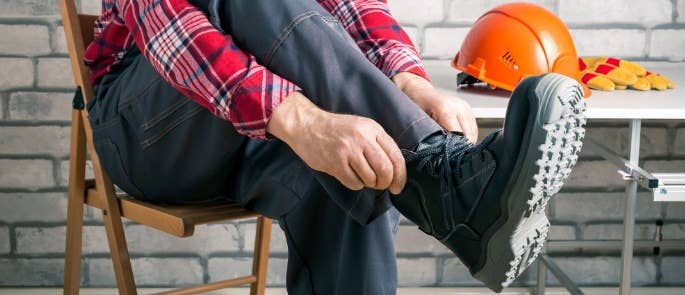
These are important responsibilities to follow. If employees adhere to all the information, instruction, and training provided to them by their employer, they will help to ensure the PPE does its job as intended, and will play a key part in helping to uphold health and safety.
PPE is just one type of control measure for mitigating risks, but it is an important one if it’s identified in the risk assessment as necessary. Employers must be aware of their duties surrounding PPE, so they can ensure it’s selected, used, and maintained correctly. Likewise, employees should know what part they play regarding PPE at work. They must follow all the training provided to them, to ensure that the PPE serves its purpose of protecting them.
As we have discussed in this article, these duties are set out in the PPE at Work Regulations, which were amended in 2022 to include casual and intermittent workers, and many specific Regulations have their own requirements for PPE, such as the COSHH Regulations for RPE and the Noise at Work Regulations for hearing protection. Understanding the duties of various Regulations is therefore important for ensuring PPE is used correctly and safely.
What to Read Next:
- Refusal to Wear PPE: Guidance for Employers
- PPE in Construction: Safety Guidance and Checklist
- Hard Hat Colour Codes in Construction: What Do They Mean?
- PPE Quiz
- 15 Workshop Hazards and How to Avoid Them
- Warehouse Safety Quiz
- Online Personal Protective Equipment (PPE) Training Course


